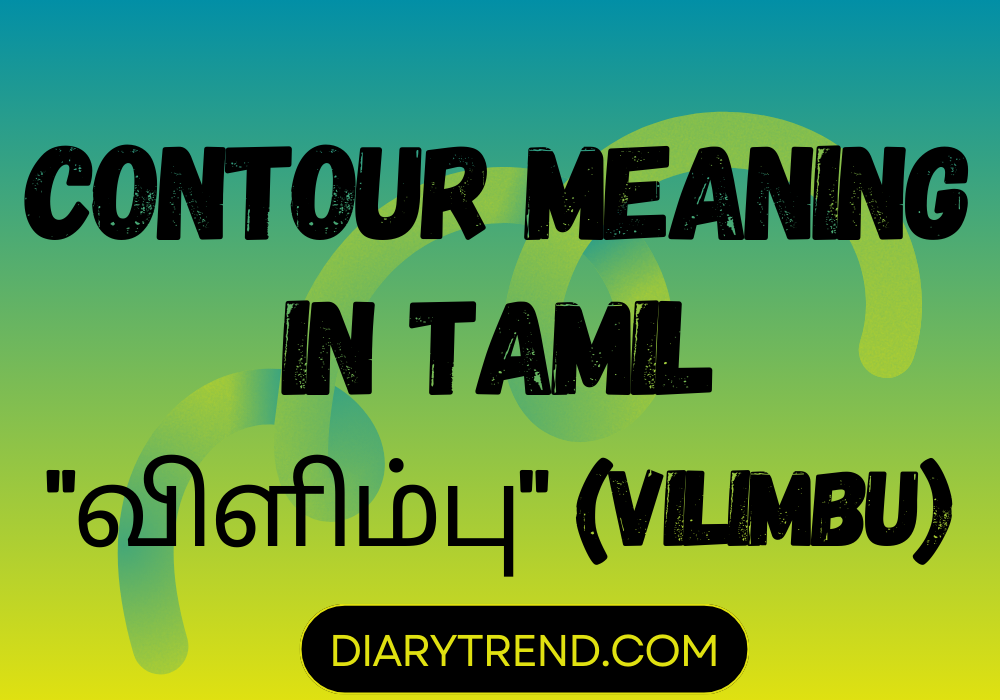The term “contour” in English, when translated into Tamil, is known as “விளிம்பு” (Vilimbu). This concept holds a significant place in various disciplines such as geography, art, and mathematics, bridging linguistic and cultural divides through its universal application and understanding. In this article, we will explore the multifaceted significance of contours, or விளிம்பு, across different fields, delving into its implications, uses, and the profound depth it adds to each domain.
Understanding விளிம்பு (Contour) in Geography
In geography, contours or விளிம்பு are essential for representing the three-dimensional shape of the terrain on a two-dimensional map. These lines connect points of equal elevation above a reference level, such as sea level, enabling the visualization of hills, valleys, and plains on a flat surface. This visualization is crucial for a variety of applications, including land use planning, construction, and even in outdoor activities like hiking and mountaineering. By studying contours, geographers and professionals can assess the slope, elevation, and ruggedness of the terrain, facilitating informed decision-making and strategic planning.
விளிம்பு in Art and Design
In the realm of art and design, விளிம்பு (contour) refers to the outlines that define forms and shapes. This concept is fundamental in drawing and painting, where artists use contour lines to create a sense of dimensionality and depth on a flat surface. Contour drawing, focusing on capturing the edges and boundaries of objects, is a fundamental technique that helps artists develop observational skills and an understanding of form. In design, contours influence aesthetics and functionality, guiding the visual flow and interaction within a space or an object, showcasing the versatility and importance of understanding contours in creative expressions.
The Role of விளிம்பு in Mathematics and Physics
In mathematics and physics, contours or விளிம்பு embody a more abstract concept. In mathematics, contour lines are used in graph theory to represent level sets or isovalues, fundamental in optimization problems, and in understanding multivariable functions. Physics utilizes contour lines to visualize fields, such as gravitational, electric, and magnetic fields, by connecting points of equal potential. This visualization aids in comprehending the distribution and intensity of forces in a given space, highlighting the omnipresence and significance of contours in scientific exploration and innovation.
விளிம்பு in Environmental Science and Ecology
In environmental science and ecology, the concept of contour or விளிம்பு plays a pivotal role in understanding and managing natural landscapes. Contour farming, for instance, is an agricultural practice that involves tilling and planting across a slope following its elevation contour lines. This method reduces runoff, prevents soil erosion, and promotes water conservation, illustrating how the understanding of contours can lead to sustainable practices and environmental stewardship.
Cultural and Linguistic Perspectives on விளிம்பு
The Tamil term விளிம்பு, like its English counterpart, encapsulates more than just a technical definition; it embodies a cultural and linguistic richness that reflects the Tamil people’s connection to the land, art, and science. The concept of விளிம்பு transcends its immediate meanings, delving into philosophical realms where it signifies boundaries, transitions, and the nuances of perception and reality. In Tamil literature and poetry, விளிம்பு often metaphorically represents the edges of human emotion, experiences, and the existential boundaries that define and shape our understanding of the world.
Conclusion
The exploration of விளிம்பு (contour) across various disciplines underscores its universal significance and the interconnectedness of human knowledge and experience. Whether in the tangible elevations of the earth’s surface, the abstract realms of mathematics, the expressive lines in art, or the sustainable practices in agriculture, contours guide, inform, and inspire. By understanding and appreciating the depth of விளிம்பு, we gain insights into not only the physical world but also the cultural and intellectual landscapes that shape our collective human endeavor. The concept of விளிம்பு, therefore, stands as a testament to the richness of Tamil language and its capacity to convey complex and universal ideas, bridging disciplines and cultures in its profound simplicity and depth.
